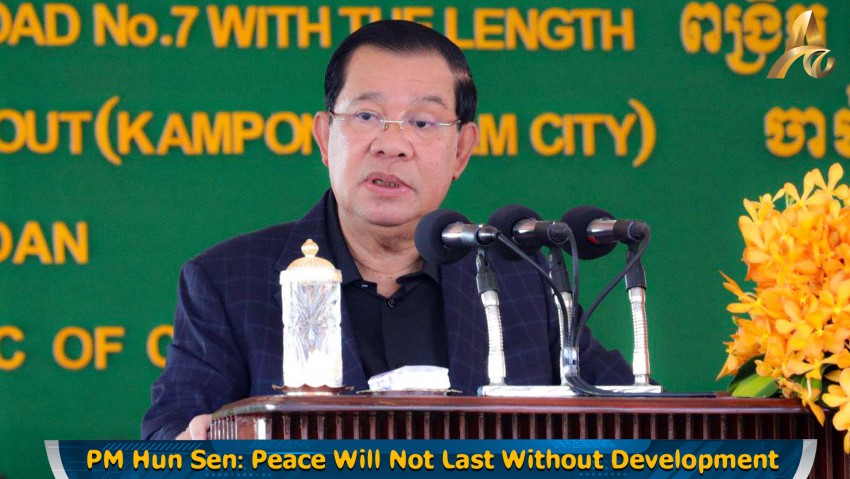With the world in the midst of a “Fourth Industrial Revolution” which has been accelerated by the Covid-19 pandemic, Cambodia is making efforts in many sectors to modernize and become competitive in its digital development. In early 2022, the Digital Government Policy was released with the goal of improving the livelihoods of the Cambodian people by establishing a “government underpinned by digital infrastructure and technologies”. Amidst this push to bring Cambodia into the modern age, the Cambodian Academy of Digital Technology (CADT) has developed the first robot to speak and interpret Khmer, allowing Cambodians to interact with AI in their native language for the first time.

Currently training as a receptionist for CADT, Sok has already met Prime Minister Hun Sen. Its team is constantly developing software and gathering data which will allow it to communicate seamlessly in Khmer and English, generating its own responses rather than reciting pre-recorded ones.

Funded by a $20,000 grant from the Ministry of Post and Telecommunications, Sok is integrated with functions that can capture and recognize human faces, interpret spoken Khmer and respond accordingly. Sok is programmed to learn and develop its specialties as researchers input more data. EAC News spoke with AI Research Coordinator Prach Chanoudom to better understand the challenging process of creating software that can interact in the Khmer language.

He explained that to get a robot to understand and respond to human speech, it needs three core technologies: automatic speech recognition (speech-to-text), a Chatbot to interpret the audio input, and text-to-speech to allow the robot to respond. Sok’s team has encountered a number of challenges specific to working with the Khmer language.

Compared to other languages, there is very little data to source in Khmer and the data that does exist is not centralized, spread out across various companies and institutes. They are often building software from scratch. Another challenge arises from the written structure of Khmer. Sok’s Chatbot developer, Lyheang Ung, notes that since Khmer words and characters are not separated when written, he must manually segment and input words and characters for Sok to learn.

The team hopes the robot will be able to communicate effectively through WhatsApp within six months, in addition to eventually being able to converse with Chat GPT. Once Sok is out of the research and development stage, the team wants to export the software to a variety of industries that will be able to program the robot to fit individual needs. “In the future, if you want the system to integrate into specific fields, you can get this system and be able to input data or information [yourself] related to [your] specific field,” said Oudom. With the government’s current slogan, “New Technologies, New Job Opportunities”, such versatile software could prove to have many applications. Oudom says the technology at present would work great in banks or hotels as a customer service agent. With more menial tasks being done by technology, the hope is that people will be freer to pursue higher ventures. Oudom sees the lack of human resources in scientific research as a major setback for Cambodia’s technological progress.

CADT is the first telecommunication and e-commerce school in the country and is also host to its first scientific research institute. Established by the Ministry of Post and Telecommunications in 2013, their research includes data science, AI, and the Internet of Things (IoT), which describes the network of physical objects—“things”—that are embedded with sensors, software, and other technologies for the purpose of connecting and exchanging data with other devices and systems over the internet.

Cambodia is a part of the ASEAN 4.0 Digital Masterplan, which aims “to achieve a seamlessly and comprehensively connected and integrated ASEAN that will promote competitiveness, inclusiveness, and a greater sense of Community.” While Cambodia is dedicated to developing its technological relevance, it still faces major challenges in terms of the public’s digital and social media literacy. Oudom is currently working on an app which will protect user data during digital transactions, as many use Facebook to purchase items, unwittingly divulging their personal information on public platforms. He also mentioned the need for broader internet access, especially in regions outside of the capital.
The future looks bright for the students at CADT who are working on a variety of technology resources including Optical Character Recognition (OCR), which will be able to translate Khmer text captured on camera into other languages. Additionally, their robot won the 2022 Robocon and students are planning to compete in this year’s Robocon, held in Cambodia. Sok is an amazing feat of teamwork and dedication that brings pride and prestige to Cambodia’s technological endeavors.






















